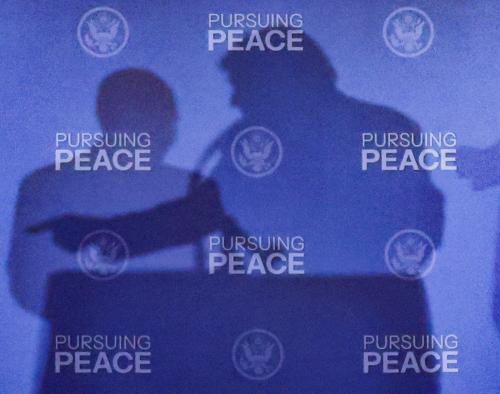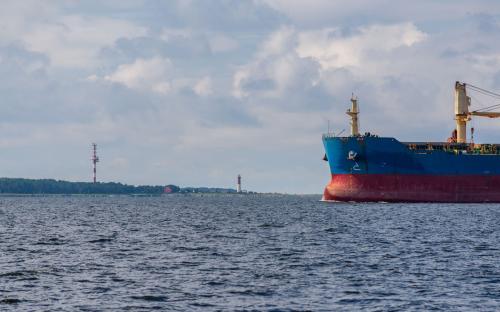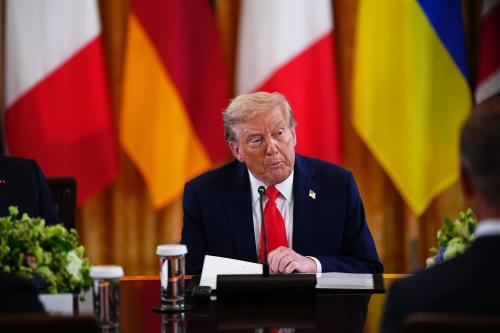Seventy years ago this week, as World War II entered its final phase, delegates from 50 nations gathered in San Francisco to create the United Nations. The 1945 settlement is often favorably compared to the Versailles Conference after World War I, which sowed the seeds of the next global conflict.
At a time when the modern international order appears under strain, it is tempting to look back and ask what we can learn from San Francisco. Such nostalgia is misplaced. The 1945 order failed—not partially and over the long term, but completely, almost immediately, and with terrible consequences. It is its failure that holds lessons for us today.
The San Francisco Conference was the culmination of American post-war planning. It was based on the notion that the old balance of power system had failed and needed to be replaced with a cooperative system. The major powers would work in concert at the United Nations to confront aggressor states and to peacefully resolve disputes between themselves.
There was also a second more realist logic underpinning this lofty vision. Each of the victorious powers would be granted a sphere of influence that the others would respect—the Soviet Union in Eastern Europe, the United States in the Pacific, and the United States, Britain, and France in Western Europe.
The United States recognized that a spheres of influence peace was somewhat incompatible with the rejection of the balance of power. But U.S. policymakers saw global commitments as more important than regional behavior. They also believed they really needed Soviet participation in the U.N. If recognizing Soviet dominance of Eastern Europe was the price of Soviet support then so be it.
As it planned for the post war period, the United States trusted that the Soviets would stay inside their own sphere. Despite warnings from Churchill, they made almost no effort to identify U.S. global interests, to pinpoint where they might conflict with Soviet interests, and to negotiate accordingly. For instance, President Roosevelt signaled disinterest toward the Dardanelles Straits and Iran, which would both become flashpoints in 1946.
The Soviet Union ruthlessly exploited this inconsistency, especially after the death of Roosevelt. Stalin established facts on the ground while paying lip service to the United Nations. Americans grew dismayed as the new world order failed to materialize. Even then, the United States could have lived with Soviet domination of Eastern Europe. It was when the Soviets began to expand to the Mediterranean that alarm bells really went off, particularly with the experience of the 1930s fresh in everyone’s minds.
An unprecedented and decades-long peacetime struggle between the world’s two superpowers followed. The world went to the brink of nuclear war more than once. Millions perished in proxy wars. Hundreds of millions were enslaved in the Soviet bloc. The United States prevailed in the end, but a large amount of luck was involved in the Cold War not turning hot. The 1945 order did have one positive effect—the institution it created. The United Nations is an important forum in world politics and does much good work from peacekeeping to health care. But that cannot obscure the fact that the broader 1945 settlement failed catastrophically.
In fact, the successful international order that rebuilt Europe, contained the Soviet Union, and spread democracy and market economics was born not in 1945 but in 1947 when U.S. leaders tried to deal with the consequences of the collapse of the 1945 settlement. It is the 1947 to 1950 effort that produced the Marshall Plan and, in time, NATO, the EU, and bilateral alliances in East Asia. Some of these initiatives were devised during World War II but they were not domestically viable until the Cold War began (and in some cases until the outbreak of the Korean War).
So, why did the 1947 order succeed while the 1945 order did not? The principal lesson of 1945 is that a stable international order can only be formed between states that share an understanding of what constitutes a stable geopolitical order. The United States and the Soviet Union had no such understanding. U.S. leaders wanted to believe that the Soviets agreed with them and allowed this desire to prevent them from honestly assessing if it were the case or not. Failing to clearly address this gap inadvertently encouraged the Soviets to test the limits of the 1945 order beyond its breaking point.
Today, as the Middle East unravels and the territorial status quo is challenged in Eastern Europe and East Asia, the United States would do well to remember this lesson. Crises must be looked at in their geopolitical context and part of a larger whole. U.S. leaders must clearly articulate their vision of what a stable order looks like and they must be prepared to push back when it is challenged. And, the United States should seek allies and partners to build positions of strength. This is not a sufficient condition of an international order (much also depends on other factors) but it is a necessary one. Understanding the geopolitical game and playing it well is the best way of reversing the trajectory of disorder.
The Brookings Institution is committed to quality, independence, and impact.
We are supported by a diverse array of funders. In line with our values and policies, each Brookings publication represents the sole views of its author(s).




Commentary
The lessons of San Francisco
April 24, 2015